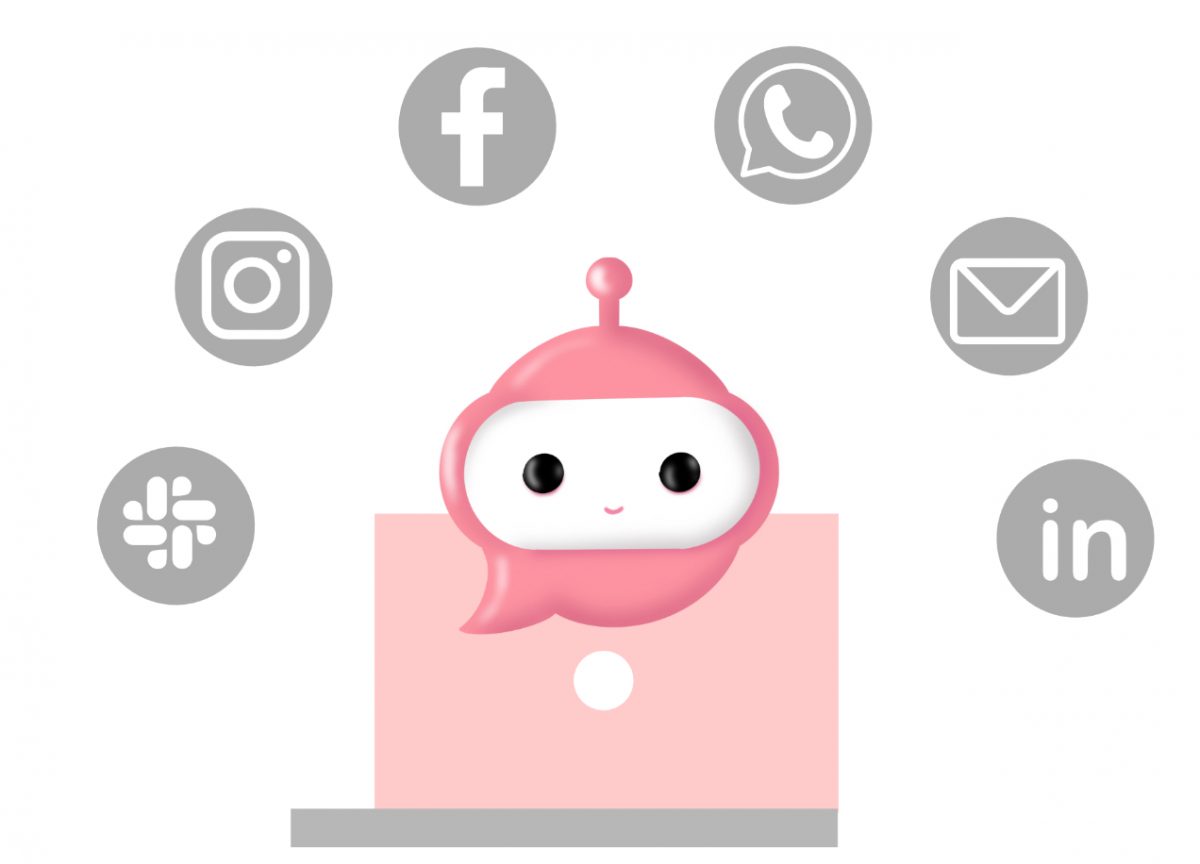The eCommerce market is rapidly growing and has become essential. It has become crucial to guarantee the constant flow of services around-the-clock due to rising consumer demand. One of the most significant trends in the online commerce business is keeping up with consumers’ expanding needs.
Companies turned to automation when they realised it was impossible to meet the expanding client demands and change to fit them.
As a result, conversational AI chatbots for eCommerce exist that can enhance customer-driven and customer-centric activities.
What are E-Commerce Chatbots?
E-Commerce Artificially intelligent chatbots are a tool that online businesses may use to interact with customers at every stage of the buying process. These chatbots can be used by online retailers to respond to inquiries about their goods on their websites or even on other messaging services like WhatsApp, Instagram, Facebook Messenger, etc.
Before a customer makes a purchase, these eCommerce chatbots address any concerns they may have about the goods using conversational marketing. These bots are utilised for conversational commerce and intelligent, immediate after-sales support, avoiding the need for human customer service representatives. When conducting international business via the internet in Germany, this is really helpful.
The benefits of a chatbot for your online store
For your eCommerce store, conversational AI can offer a number of advantages. Here are some of the principal ones:
- A two-way conversation with the customer is made possible. It develops a relationship with them and learns from them in addition to instructing and guiding them.
- When compared to email, the conversational bot engages with 2 to 5 times more clients.
- When used properly, conversational commerce can boost a store’s annual revenue by 7 to 25%.
- It opens up new avenues for generating revenue; rather than being restricted to your website, you can now present your catalogue, conduct transactions, and collect money via Telegram, WhatsApp, Messenger, and more than ten more platforms.
- With the help of your bot, you can develop a potent omnichannel engagement strategy by sending information and promotional messages to the touchpoints where your customers spend the most time.
How do chatbots improve the functionality of eCommerce websites?
Have you ever wondered what leads to cart abandonment? Well, let’s unfold this mystery.
According to Forrester, 53% of online shoppers abandon their carts if they do not receive instant answers to their questions.
This means that simply offering email support won’t help it anymore. And they’re not going to wait or hold over a phone call. Customers need answers as soon as the question arises. Now, you can’t overload every webpage with minute detail about the product and services. The best that you can do is to deploy a chatbot for your eCommerce website and keep the ball rolling. This brings your business even more value when your bot has a live chat system integrated with it. Now even your customers’ most complex queries can be answered in real-time, saving more carts than ever before.
 8 ways that chatbots can increase sales and customer service for your online store
8 ways that chatbots can increase sales and customer service for your online store
1.Customising your services
AI chatbots used in eCommerce can remember customers’ previous interactions and utilise them to further tailor future chats. Additionally, when directing consumers through the sales process and making product recommendations, bots can keep the focus on the customer. Additionally, by offering relevant products, you increase client engagement and save them time by personalising the services.
2. Keeps track of encounters in real-time
AI chatbots give eCommerce companies direct access to in-person, real-time user interaction. This data can be examined to enhance the services in accordance with user feedback. Instant access to vital information lowers operating costs and increases a business’s effectiveness and functionality.
3. enables customer leaders to concentrate on difficult tasks
Chatbots can let customer care representatives keep the focus on complex issues since they can answer 80% of your clients’ recurring, easy requests. You can gain more customers and save operating costs by giving complicated inquiries top consideration.
4. Provides customers with quick, dependable, and affordable help.
More than 50% of customers anticipate businesses to be operating round-the-clock. User interactions and questions are recorded by chatbots. They answer right away and are accessible 24/7.
Due to competitors operating and offering help around-the-clock, eCommerce companies that can’t provide instant service frequently fail.
Bots can build a genuine relationship with users by providing immediate assistance and two-way communication.
80% of the frequently asked questions by customers may be answered by chatbots that use AI. Additionally, it will immediately forward the inquiry to a live chat representative if it is unable to resolve the problem. Users can learn from a bot about the deals and advantages of making payments online.
Chatbots on e-commerce websites provide answers to frequently asked questions, collect user evaluations, and handle challenging client inquiries. These are simply made to reduce the clutter a customer might run into when shopping.
5. Enables you to broadcast your inventory through many channels
Wouldn’t it be better if your customers could make a purchase from you directly through that social media app if they realised they needed to do so while using another social media app?
They may find it tedious to open your website or app and prefer not to transfer between platforms. Fortunately, you don’t require them to.
You may provide customers the ability to browse your inventory and make purchases directly over the platform they’re already using by deploying a chatbot on WhatsApp, Facebook Messenger, Telegram, and more than 10 more touch-points.
It delivers customers an omnichannel experience while reducing their effort.
6. Serve as the ideal information basis.
AI-based chatbots make it simple to provide clients with the information they need to know. For instance, the bot will provide one-touch access to the FAQ area within the chat page when a consumer chooses a specific product. Additionally, if clients need more information, the chatbot can quickly process the input and deliver the needed details.
As a result, the eCommerce chatbot’s connection with its users makes the purchasing process simpler, increasing engagement and revenue.
7. Use storytelling to generate revenue
The art of storytelling is pure. It can link businesses with customers when equipped with an AI chatbot for eCommerce. As soon as AI chatbots become proficient at having conversations by learning from user inputs, this ultimately increases the engagement rate.
eCommerce companies do more than merely offer goods to their clients, in a sense. Instead, they inform consumers about the product and help them remember it. Interactive elements including images, animations, videos, and music are used to engage visitors. As a result, customers become more engaged with the brand as the chatbot more successfully captures their attention and streamlines the sales process.
8. Offers metrics
The majority of people regard an AI-powered chatbot to be a conversational interface. However, they have the potential to be a goldmine when used properly.
The right user metrics can transform your company. Traditional methods, however, are unable to collect crucial information on how website visitors engage. An AI-based eCommerce chatbot, however, has the ability to gather unique information about consumers in real time, such as their interactions with products, preferences, dislikes, and responses to the chatbot. These user details can be used wisely and are nothing short of a gold mine. By enhancing the services in the proper way, they may assist eCommerce enterprises in boosting the consumer experience.
Explore Mfluence
eCommerce chatbots constantly strive to provide clients with an exceptional experience. However, using conventional engagement strategies yields an average level of consumer satisfaction.
Conclusion
A high customer satisfaction rate is always a result of a positive customer experience. Conversational chatbot marketing is proving to be very helpful in this regard.
Businesses that sell online frequently struggle to improve consumer experience. This is primarily due to the fact that dissatisfied customers are reluctant to make another purchase. Therefore, it’s critical to comprehend whether a customer is satisfied with the offerings. Customers can convey their emotions using conversational chatbot marketing, which enables firms to comprehend and empathise with their clients.
Obtaining customer feedback is crucial, regardless of the business implications. It can assist in identifying conversational weak points in chatbots, such as inaccurate answers, awkward conversation structure, cliched responses, and knowledge gaps.







